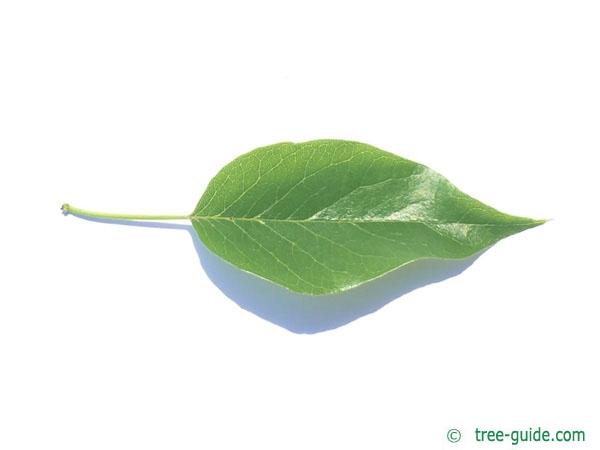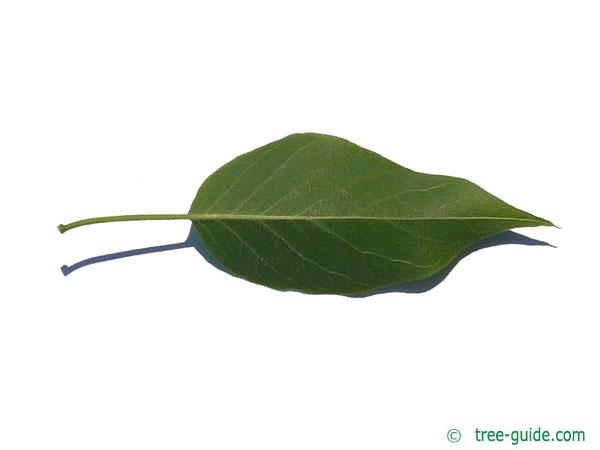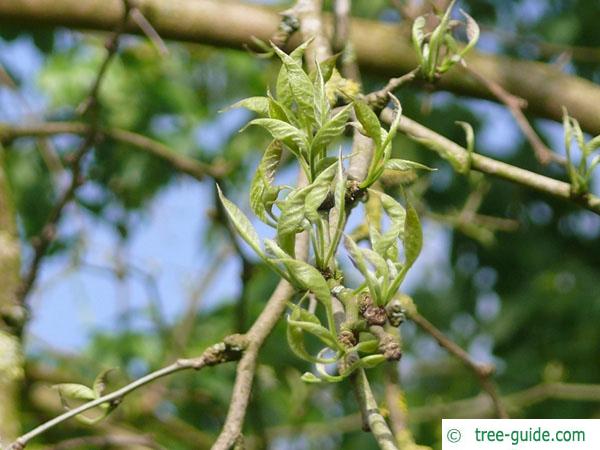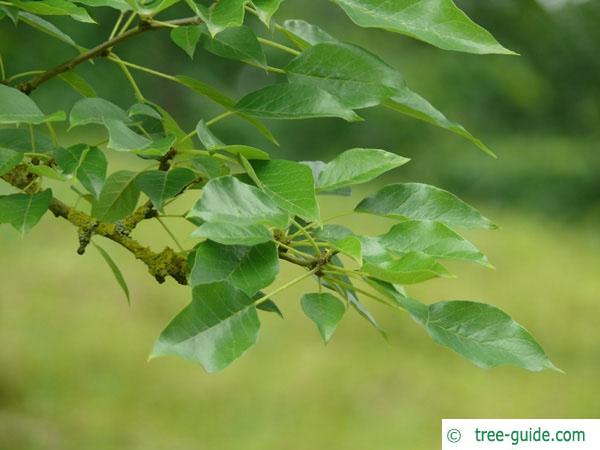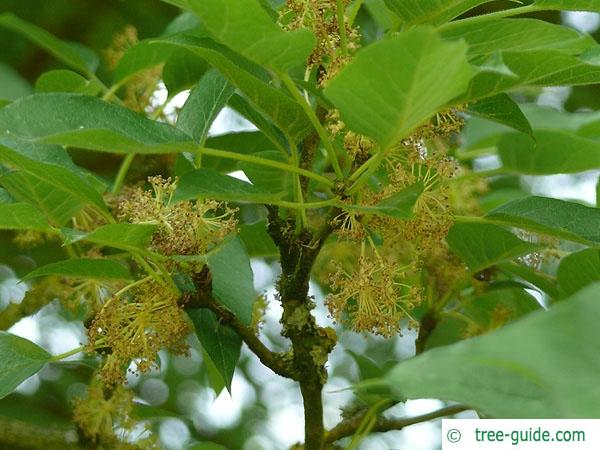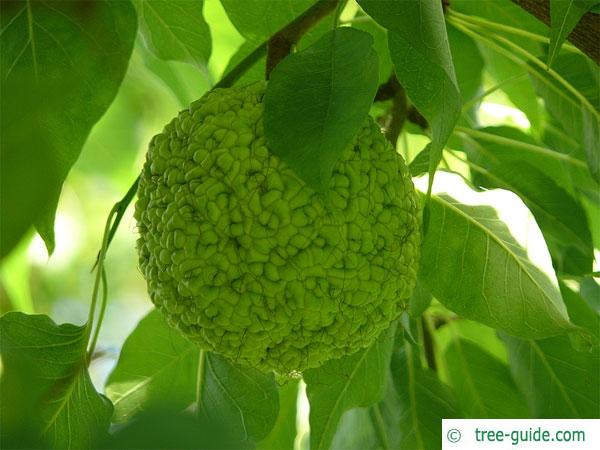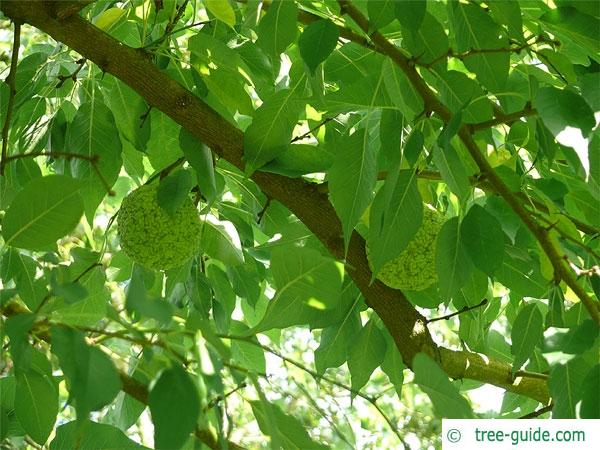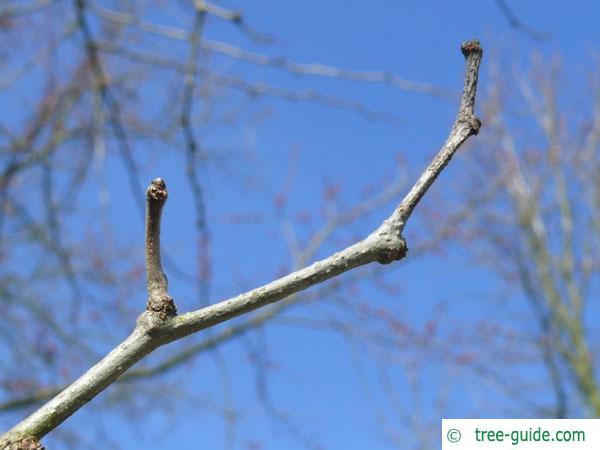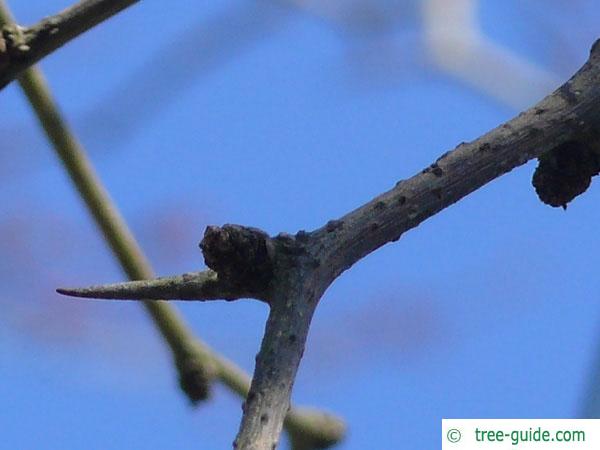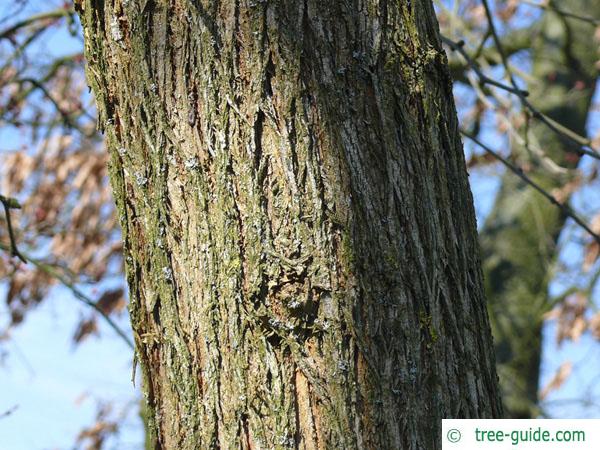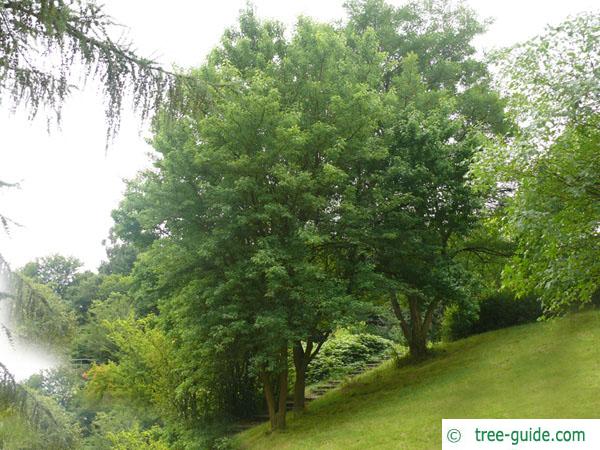Basisdaten
description:
The Osage orange comes from the United States but is also found in the Ontario region. It has been proven that the fruit discourage insects.
Tree profile
name botanical:
Maclura pomifera
other name:
Bois-D'Arc
family:
Rose family (Rosaceae)
species:
deciduous tree
height:
up to 15 m (49 ft)
leaf:
The leaves of Osage-orange are dark green, oblong to ovate, glossy and pointed. The leaf margin is smooth.
leaf shape:
ovoid
leaf margin:
smooth
leaf position:
alternate
fall foliage:
yellow
flowering:
April - June
blossom color:
greenish
blossom description:
The flower appears after the leaf shoots. The bright green male flowers hang in bunches. The female flower is circular.
gender distribution:
monoecious / hermaphrodite
fruit:
Stone fruit, green, round
branches:
The branches are gray-brown with thorns.
bark:
The bark is dark brown and fissured.
root:
Shallow-rooting plant (sprouts)
location:
Sun
soil:
sandy to loamy
ph value:
acid - alkaline
usage:
single tree
comment:
Das Holz wurde von den Indianern zum Bogenbau verwendet.







